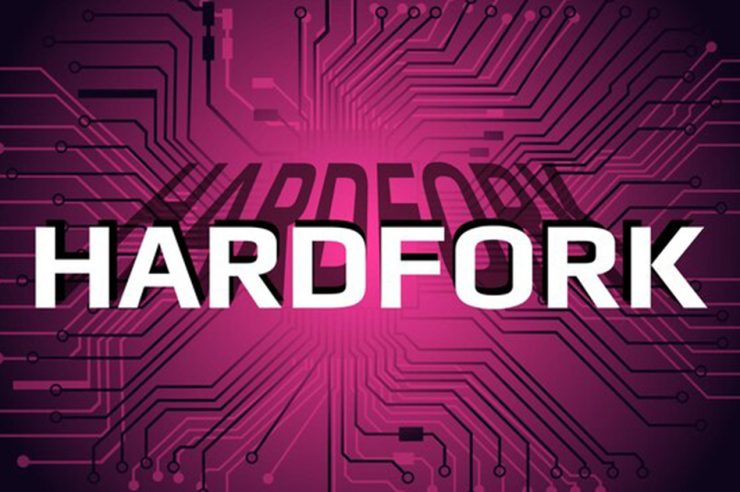Have you heard about a hard fork but are confused as to its purpose and operation? A hard fork is used by blockchain networks to upgrade their platform without invalidating previously confirmed transactions, or alter its rules when consensus cannot be achieved on updates to protocol updates.
Understanding hard forks can be a complex process, but understanding them is essential if you want to get involved with blockchain technology. This beginners’ guide provides a thorough overview of hard forks and the different types that exist; with this knowledge in hand you can assess risks and rewards when investing in cryptocurrency assets.
What Is A Hard Fork?
A hard fork occurs when there is a change in the rules of a blockchain, often as a result of disagreement over how its network should evolve. A hard fork may produce its own version of blockchain with separate rules and tokens; however, should such changes be rejected by its network, then likely remain part of its main chain instead.
Hard forks should generally represent consensus changes rather than minority concerns, yet sometimes minority changes occur despite this aim. Most hard forks aim to prevent chain splits but there can be situations in which this happens: when two versions of blockchain exist and both networks are widely adopted by their community after being divided apart via hard fork, chain splits have occurred, as opposed to soft forks which only create new chains on one blockchain network.
1. The Pros And Cons Of Hard Forks

Hard forks are used to modify the rules of a blockchain network and can help address some issues present on it, yet come with risks and challenges investors must be wary of. Pros of hard forks include decentralized consensus being achieved via it when only minority chains remain on original blockchain while majority chains form on new one;
Hard forks offer many benefits for fixing structural issues on blockchains, from broken code fixes and security concerns, to adding functionality like smart contract functionality or token functionality. Furthermore, hard forks can help issuers issue tokens for ICOs but cannot issue them on their chosen blockchains due to being incompatible.
2. Preparing For A Hard Fork

As blockchain networks undergo hard forks, it is vital to understand its effects both on the network and individual tokens within it. A hard fork could have profound ramifications on prices so it is vital that we understand how a hard fork might impact them. A few aspects to keep in mind when anticipating hard forks include: – Was the hard fork expected?
Not all hard forks can be anticipated, so it is wise to stay up-to-date on news relating to blockchains. Knowing which blockchain will be utilized following a hard fork and its version number are both crucial pieces of information. Furthermore, knowing which tokens will be created after such forks as well as their uses cases are also of equal importance.
3. Decide If A Hard Fork Is Right For You

Before making a decision to execute a hard fork, it is vital to first understand its potential impact on the network and subsequent implications for both versions of blockchain after execution of such fork. Some aspects to keep in mind when considering hard forks include:- What impact could such an action have on my network?- In terms of economic impacts as well as community effects of this hard fork action it must also be understood how they would manifest.
What will Happen to the Old Blockchain and Holders of Tokens? It is crucial that you understand what will occur with regard to the old blockchain and holders of tokens. Furthermore, what will Happen With the New Blockchain and Holders of Tokens?
4. Impact Of Hard Forks On The Crypto Market

Hard forks can have many adverse repercussions for the cryptocurrency market as a whole. Such changes may signal positive developments for a blockchain and lead to an increase in token value; but they may also increase uncertainty by creating two distinct versions of it, potentially decreasing price over time as investors become warier of chain splits.
5. Strategies For Investing In Hard Forks

When investing in a hard fork, there are a variety of strategies you can employ when investing. One is waiting to see which blockchain gains momentum before deciding which token(s) or blockchain(s) to invest in; alternatively you could diversify risk by buying both before the fork happens by purchasing both tokens at the same time;
6. Educational Resources For Understanding Hard Forks
Investopedia – For those unfamiliar with hard forks and their impacts, this comprehensive guide by Investopedia can provide an introduction. It outlines various types of hard forks, their purposes and how they alter blockchain networks.
Coin Central’s comprehensive guide to hard forks includes information about their various types and their working principles.
Hard Fork – Hard Fork provides a list of scheduled hard forks for 2019 and 2020.
Reddit offers several subreddits dedicated to hard forks, such as /r/hardfork and /r/hardforks; Medium is another great source for reading detailed articles about hard forks like EOS and Cardano hard forks.
Conclusion
Hard forks are used to alter the rules of a blockchain network and can help address various problems on it. Before investing in any token, it is crucial that investors understand both its benefits and drawbacks, including any impact it could have. There are steps that you can take to prepare for hard forks as well as educational resources available that can provide more clarity.
Also read:- What is Proof of Stake?

